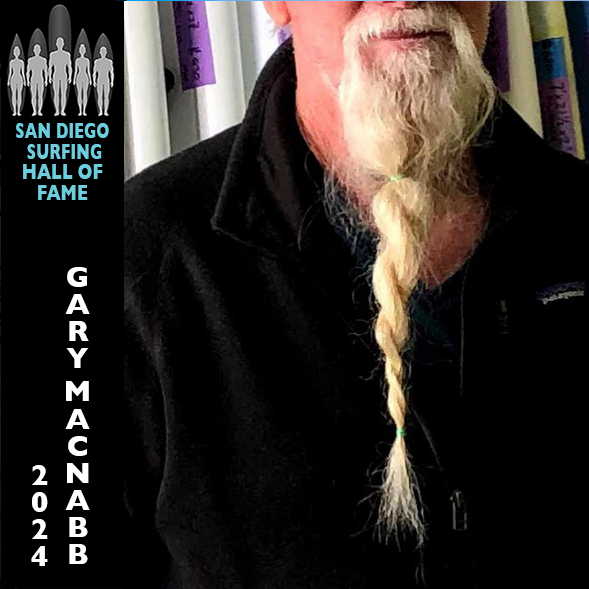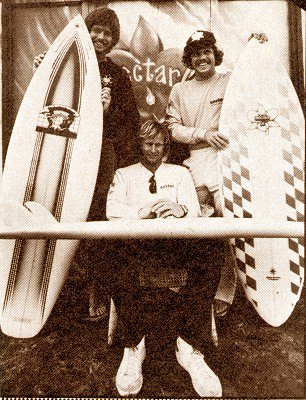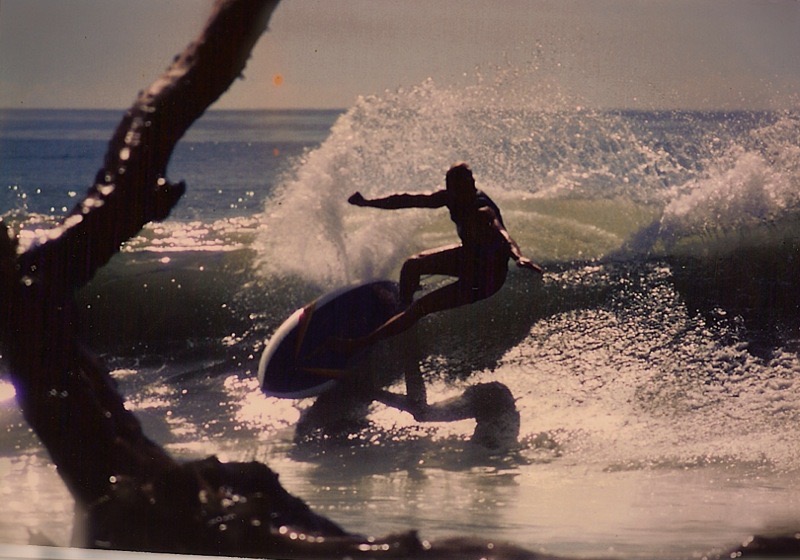The evolution of surfing is a story intricately woven with the ingenuity of shapers, the daring of riders, and the relentless pursuit of enhanced performance. Among the pivotal figures who have shaped the very tools of this aquatic dance, Gary MacNabb stands as a true innovator. As the founder of the iconic Nectar Surfboards in the 1970s San Diego surf scene, MacNabb not only built a respected brand but also played a crucial role in introducing a revolutionary design that would forever alter the way humans interact with waves: the thruster. His profound impact on surfboard technology and the surfing experience was rightfully celebrated in October 2024 with his induction into the San Diego Surfing Hall of Fame, a prestigious honor bestowed upon him by his peers along the hallowed banks of Rose Creek at the San Diego Mission Bay Boat and Ski Club.

Gary MacNabb’s journey into the heart of surfboard design began in the vibrant and transformative era of the 1970s San Diego surf culture. While later in his distinguished career he would lend his shaping expertise to the renowned Rainbow Surfboards, it was the establishment of Nectar Surfboards in 1976 that marked his indelible contribution to the sport. It was through Nectar that MacNabb, in collaboration with the visionary Australian surfer and shaper Simon Anderson, would introduce the now-ubiquitous thruster fin setup to the global surfing community.
“The thruster came directly from the twin fins we were riding,” MacNabb astutely recalled, reflecting on the groundbreaking innovation. “We threw a stabilizer fin on there and it made all the difference. It just really allowed you to surf backside a lot more confidently.” This simple yet profound modification, adding a central stabilizing fin to the existing twin-fin configuration, unlocked a new dimension of control, maneuverability, and overall performance that would redefine the possibilities of wave riding.
Established in the fertile grounds of 1970s San Diego, Nectar Surfboards, under Gary MacNabb’s guidance, quickly gained a reputation for its commitment to innovative designs and high-quality craftsmanship. MacNabb’s boards resonated with surfers of all levels, from aspiring amateurs honing their skills to seasoned professionals pushing the boundaries of the sport. His dedication to understanding the hydrodynamics of surfboard design and translating that knowledge into tangible performance advantages played a significant role in the ongoing evolution of modern surfing equipment. Nectar became synonymous with a forward-thinking approach, constantly seeking to optimize the connection between surfer and wave.
The early 1980s witnessed a pivotal moment that subtly yet powerfully underscored the interconnectedness and innovative spirit of the San Diego surf scene. La Jolla Surf Systems, a prominent local entity, released the now-iconic “The Proof’s In The Pudding” advertisement, a snapshot in time that captured the camaraderie and creative energy that defined the era. Photographed by the legendary Art Brewer, this evocative image brought together a collection of influential figures who were each contributing in their unique way to the evolution of surfing. Among this esteemed gathering were Eric ‘Bird’ Huffman, Bill Caster, Shaun Stüssy, Gary McNabb, Tim Bessell, with a nod to the legendary Skip Frye. MacNabb’s inclusion in this pantheon of innovators not only highlighted his respected standing within the local surfing community but also subtly foreshadowed the significant impact his work with Nectar would have on the global surfing landscape. The ad remains a nostalgic emblem of a transformative era, a testament to the collaborative and groundbreaking spirit that thrived within San Diego’s surfing circles.
Gary MacNabb’s Nectar Surfboards served as the primary vehicle for introducing Simon Anderson’s revolutionary thruster surfboard fin design to the United States market. This three-fin configuration, initially met with some skepticism, quickly gained traction as surfers experienced its transformative effects firsthand. The thruster wasn’t just a minor tweak; it fundamentally altered the dynamics of surfboard performance, offering a previously unattainable blend of speed, control, and maneuverability. It allowed for tighter turns, greater drive through carves, and significantly enhanced backside surfing capabilities, opening up new possibilities for how surfers could attack and ride waves.
The impact of the thruster cannot be overstated. It has become, and remains, the world’s most widely used and adopted surfboard fin setup. To truly grasp its significance, one must consider the relatively short yet intensely innovative history of surfboard design. In under a century, the surfboard itself had undergone a radical metamorphosis, shrinking from massive planks of redwood, sometimes exceeding 20 feet in length and weighing over 77 pounds, to the sleek, lightweight performance crafts of around six feet and a mere six pounds. Core materials, internal structures, and overall shapes had evolved dramatically, culminating in designs that even allowed for interchangeable fin setups, with as many as five different fin configurations possible on a single board.
Fins, often an overlooked component, are in fact essential to a surfboard’s performance. They are the crucial interface between the rider’s input and the water’s resistance, responsible for providing stability, enabling precise control, and dictating the board’s direction. In essence, fins possess the power to transform an otherwise unwieldy plank into high-performance wave-riding equipment, allowing surfers to harness the energy of the ocean with unprecedented finesse.
Against this backdrop of continuous innovation, the introduction of the original three-fin thruster design stands as arguably the most critical event in surfboard history since the advent of the single fin. It wasn’t merely an incremental improvement; it was a paradigm shift that redefined the standards of high-performance surfing and became the foundational template for the vast majority of surfboards produced worldwide.

The genesis of this groundbreaking design is intertwined with the career trajectory of Simon Anderson, an Australian surfing icon whose own journey provides valuable context. Born in Sydney on July 17, 1954, Anderson’s early life was steeped in aquatic pursuits. According to “The Encyclopedia of Surfing,” his family’s move to a beachfront home near the renowned surf breaks of Narrabeen further solidified his connection to the ocean. His older brother, Mark Anderson, achieved Olympic distinction as a swimmer for Australia in the 1968 Mexico Games, highlighting the family’s inherent athleticism.
Simon himself was a dedicated swimmer until his thirteenth birthday, a pivotal moment marked by the arrival of his first new surfboard. This acquisition ignited a passion that would ultimately lead him to the forefront of competitive surfing and surfboard design. By 1971, the 17-year-old regular footer had already demonstrated his prodigious talent by winning the junior divisions in both the prestigious Australian National Titles and the iconic Bells Beach contest. The following year, he successfully defended both titles, showcasing a remarkable consistency and dominance in his age group. Notably, in the national championships, this powerful surfer even triumphed over future world champions Mark Richards and Wayne Bartholomew, a clear indication of his exceptional potential.

Known for his intense, powerful turns executed with a graceful and seemingly effortless style, Anderson’s natural talent propelled him to the upper echelons of both national and international competitive surfing. By 1973, he had already achieved a third-place finish at Bells Beach and a respectable sixth place in the Coca-Cola Surfabout held at his home break of Narrabeen. Four years later, in 1977, he reached a pinnacle of success, winning both of these prestigious events, placing fourth in the legendary Pipeline Masters on Oahu’s North Shore, and finishing the world tour ranked an impressive third. He was rapidly establishing himself as one of the world’s premier surfers, particularly in the challenging conditions of big waves, most notably at Sunset Beach.
However, the late 1970s and early 1980s saw the rise of another significant surfboard design: the twin-fin, popularized by the innovative Mark Richards. According to Matt Warshaw, author of “The Encyclopedia of Surfing,” Richards introduced his version of the twin-fin in late 1977, a pivoting, small-wave board that ultimately helped him secure four consecutive world titles. This feat made the twin-fin the most coveted board design of the era.
While Simon Anderson maintained a strong presence in the world rankings, finishing 15th in 1979 and sixth in 1980, he found himself struggling to fully adapt to the often-unpredictable nature of the twin-fin. It was during this period, in 1979, that he began seriously contemplating ways to modify the design, seeking a configuration that would offer greater control and stability. Anderson was no stranger to surfboard design; he had been shaping boards since 1972 and had founded his own respected Energy Surfboards label in 1975, establishing himself as one of Australia’s most knowledgeable and respected board designers.

The “Eureka” moment for the thruster arrived in October 1980, a seemingly simple observation that would have profound and lasting consequences for surfboard design. As Matt Warshaw recounts, “Simon Anderson noticed that fellow Narrabeen surfer-shaper Frank Williams had placed a small half-moon fin near the tail of his twin fin as a stabilizer.” This seemingly minor addition sparked an immediate inspiration in Anderson’s mind.
Driven by this insight, Anderson promptly shaped himself a square-tailed board featuring three fins of equal size, all of which were smaller than the fins typically used on a twin-fin. Through a process of meticulous tweaking and fine-tuning the placement and size of these three fins, the surfer-shaper finally arrived at the board he had been searching for. “It planed and held its turning speed like a twin fin,” Warshaw explains, “But it had the grip and drive of a single-fin.” This unique combination of characteristics was revolutionary.
The new design needed a name, and “thruster” was aptly chosen. This title aimed to capture the tri-fin’s racy, responsive feel and the significant thrust it added to the surfboard’s turning capabilities, allowing surfers to generate more speed and power through their maneuvers.
Anderson, convinced of the thruster’s superiority, embarked on what could be described as a missionary journey to persuade the surfing world that this three-fin setup was a significant advancement over the established twin-fin. And what more compelling way to prove his case than to achieve consecutive victories at the prestigious Bells Beach Classic and the Coca-Cola Surfabout in 1981, riding his groundbreaking thruster design? These back-to-back wins against the world’s best surfers provided undeniable evidence of the thruster’s performance advantages.
The truth is that by the end of 1981, Simon Anderson’s thruster theory was rapidly gaining acceptance within the surfboard shaping community. Within less than a decade, the three-fin surfboard configuration had become the overwhelmingly popular choice across the planet, adopted by surfers of all skill levels and in virtually all wave conditions.
Interestingly, as Matt Warshaw notes, Anderson later “joked somewhat bitterly about his failure to patent the tri-fin design, thus missing out on perhaps millions of dollars in licensing fees.” Despite this missed financial opportunity, his contribution to surfing remains immeasurable.
Simon Anderson’s profound impact on the sport has been recognized with inductions into the Australian Hall of Fame in 1989 and the Huntington Beach Surfing Walk of Fame in 2001. His story and the development of the thruster are further chronicled in the book “Thrust: the Simon Anderson Story,” co-authored by Anderson and Australian surf journalist Tim Baker, published in 2011.
The tri-fin surfboard’s unique blend of thrust and drive is widely considered the best all-around configuration for shortboards and funboards, effectively encompassing over 90 percent of the global surfboard market. And it was California’s own Nectar Surfboards, under the visionary leadership of Gary MacNabb, that played a crucial role as the first brand to market the thruster design in the United States. Nectar Surfboards licensed the name directly from Anderson and introduced it to American surfers as the “3-Fin Thruster,” making this revolutionary design accessible to a wider audience.

Gary MacNabb’s early understanding of the thruster’s potential was evident in his 1981 observation: “Kids these days, they just slide around. The thruster is meant to go forward, not sideways.” This highlighted the design’s emphasis on drive and directional control. Simon Anderson himself, reflecting 25 years later, recalled his immediate conviction: “Straight away, from that very first board, I knew that 90 percent of surfers were going to be on this design within a year.” His prediction proved remarkably accurate.
Anderson’s approach to competitive surfing during this era was also noteworthy. He often shaped and rode a recreated version of Geoff McCoy’s unconventional needle/no-nose design, featuring low hips, an attenuated, narrow-based single fin, and a distinctively long and pointed front end, further demonstrating his willingness to experiment with surfboard design. The fin dimensions he often favored on his thrusters included three fins standing around four inches tall, compared to the six-inch twin fins and the approximately eight-inch single fins he had previously ridden.

Gary MacNabb’s induction into the San Diego Surfing Hall of Fame in October 2024 was a momentous occasion, a celebration amongst his peers recognizing his unwavering dedication and his monumental contribution to the advancement of surfboard maneuverability. Through Nectar Surfboards, MacNabb was instrumental in bringing the thruster revolution to American shores, forever changing the way surfers experience and interact with the ocean’s energy. His vision and his commitment to innovation have left an enduring mark on the sport, solidifying his place among the true pioneers of surfboard design and earning him this well-deserved honor.
Recommended products
-
Decal Gary MacNabb San Diego Surfing Hall of Fame – Maneuver Architect Design
$4.99 -
Black Mug Gary MacNabb San Diego Surfing Hall of Fame – Maneuver Architect Design
$9.99 -
T-Shirt Gary MacNabb San Diego Surfing Hall of Fame – Maneuver Architect Design
Price range: $29.99 through $34.99 -
Champion Sweatshirt Gary MacNabb San Diego Surfing Hall of Fame – Maneuver Architect Design
Price range: $59.99 through $64.99

